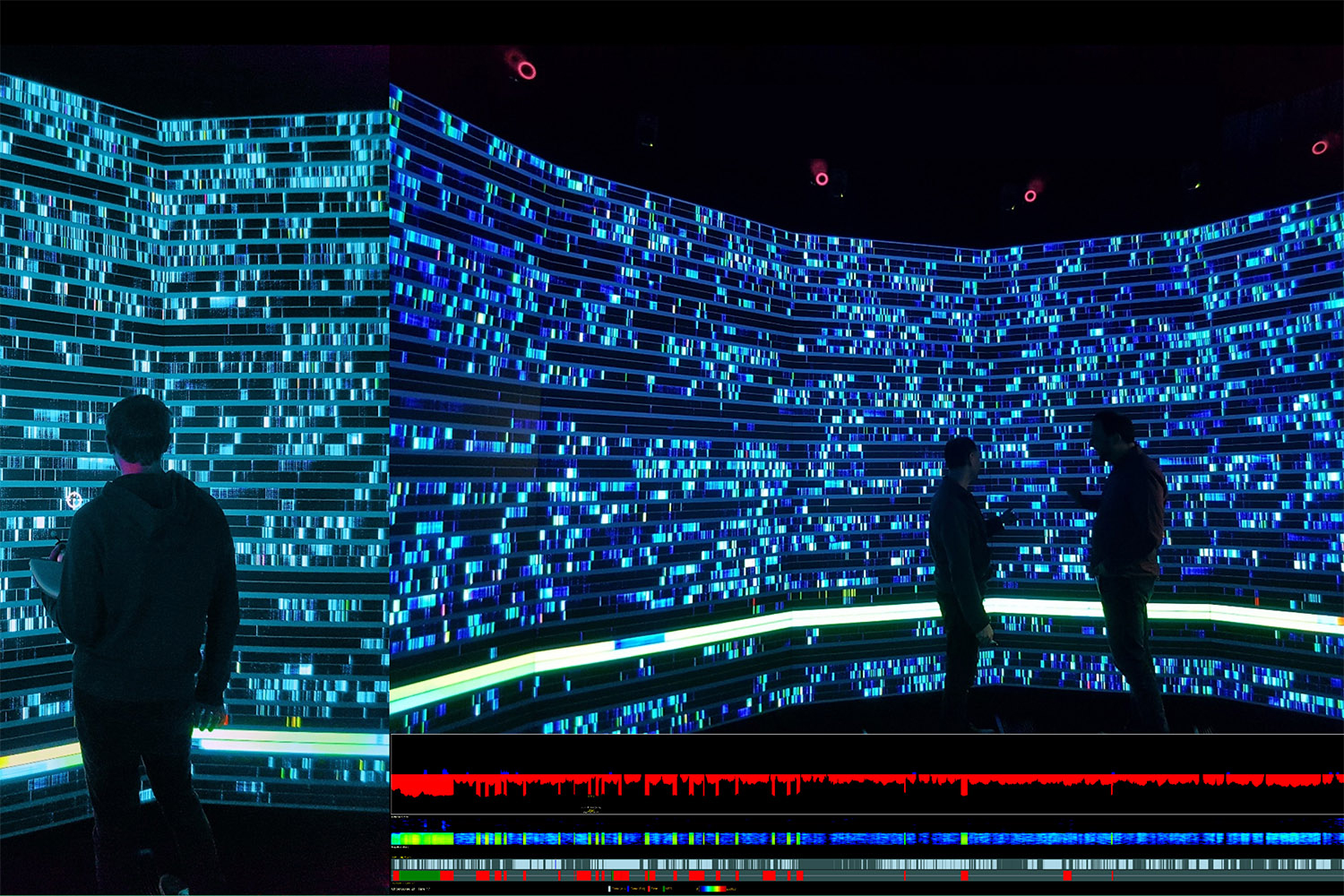
Tomasz Bednarz was a child when his parents bought him his first computer, a 8-bit Commodore C64.
“The first thing you do is just play games, right?” he says.
“And if you are curious enough, you start asking questions, like ‘how is it done? how does it work?’”
The Associate Professor remembers learning code and writing programs using just hexadecimal numbers in a bid to start visualising objects on the screen.
At high school he discovered demoscene culture, a computer art subculture which ran creative competitions to show off programming, visual art, and musical skills.
He says the competitions were "basically like digital art but cross-connected with art and science, because you use scientific methods to drive artistic and creative visualisations, and link with the music in the middle, synchronising with the graphics that you display".
“So it needed to be mathematics on steroids, and all of these machines were very, very slow, so we had to do lots of algorithmic tricks and hacks.”
The demoscene parties launched a life-long passion for computer graphics and visualisation that has led him to eventually become the Director of Visualisation at the ground breaking Expanded Perception & Interaction Centre (EPICentre) at UNSW Art & Design.
Researchers in the fields of art, design, science, medicine and engineering can use the interdisciplinary centre to visualise data sets in 3D, go virtually inside the data and interact with it, and then analyse predicted outcomes.
Associate Professor Bednarz says the centre provides tools that enable others to transform lives, but also accelerate scientific discoveries.
For example, he says the space could help visualise a genomics data set, which could help a doctor choose the right medicine for a patient.
“So if you had medicine that influenced your liver, (it could) very heavily (influence the liver) in some people, but maybe have no influence (in others) because you may have a specific gene that influences that,” he says.
“By using genomics, you can actually define all these chemicals that can be used in that space.”
Associate Professor Bednarz says the centre could potentially work out how to treat an aneurism by utilising augmented reality to visualise an affected blood vessel in 3D.
“We can simulate how the blood flows through the veins, and once you have that then you try to modify the geometry a bit and simulate various scenarios and choose best option for the surgery,” he says.
“‘What will happen if I do this, what will happen if do that’.
“And then you upload all the computations to high-performance computing so the simulation is almost done in real time, so you are seeing the outcomes of your interactions directly on the visualisation you are seeing in front of your eyes, and in fully collaborative setting if needed.”
The EPICentre is also working on a prototype that could see war veterans treated for PTSD, by exposing them to their previous traumatic experiences.
“So imagine a situation where psychologists and psychiatrists and the patients are sitting in this space which is an immersive visualisation system and the patient is talking about his experience,” Associate Professor Bednarz says.
“He’s saying ‘I can see the tree’ (boom, he sees a tree), ‘I see the river’ (boom, he sees a river), ‘I see someone shooting at me’ and then you see that.
“So by doing that, you trigger their memories, the person actually experiences that.
“So we hope that it can be like a tool that can be used in the curing psychological disorders in the future.”
The Centre is also collaborating with the Creative Robotics Laboratory at UNSW to see how robots can help people have a better life, by reconstructing a room in EPICentre’s visualisation system, and watching how the robots interact in the space.
“Because if you are getting sick, we need somebody to help us and robots can help us fill the gap especially with growing population,” he says.
Associate Professor Bednarz says about 20 “handpicked people” from a variety of backgrounds including human interaction and artificial intelligence work in the EPICentre, which is four unique labs powered by cutting-edge ‘super’ computers.
The EPICylinder lab visualises data in 3D covering almost 120 million pixels, the highest resolution cylindrical screen in the world.
It has 56 screens, hosts a 32-channel sound system with 32+1 speakers and the visualisation is driven by 28 computers with NVIDIA Quadro GPUs at 120 frames per second.
“It’s like flipping 3D glasses left and right non-stop,” Bednarz says.
The AVIE-SC lab has another cylindrical screen with a motion tracking system which is capable of transferring dancing movements to data, and eventually avatars, or more.
The Mixed Reality lab is equipped with Virtual Reality, Mixed Reality and Augmented Reality glass, has a hemispherical dome and multi-touch screen and a vast amount of interaction sensors.
The Dome lab is the highest resolution, travelling dome system in Australia and can visualise complicated science to a general audiences, such as how a common cold virus attacks blood cells, by connecting storytelling with computer graphics and animation.
“I believe you can use the EPICentre as a platform to really advance the science and scientific discovery, that’s why I believe in what we do,” Associate Professor Bednarz says.
“If I have to say in one sentence, ‘why do I do what I do?’ I say ‘visualisation simulation’, because if I can save one life by using my tools, I’ll be the happiest man on the Earth.”
